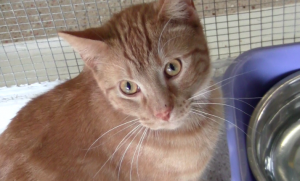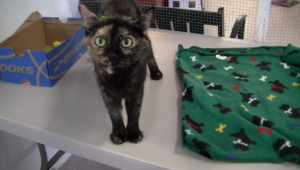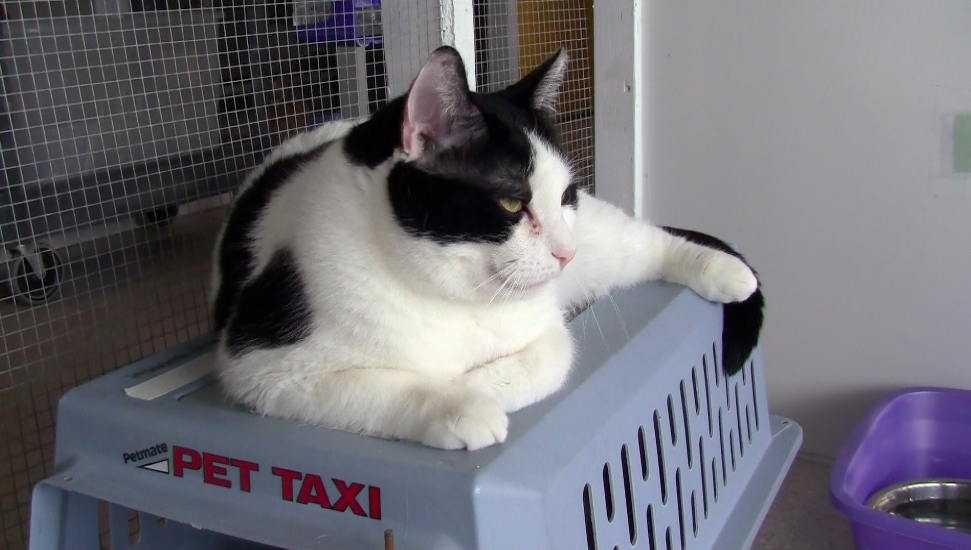In the frigid winter, humans rely on jackets, hats, mittens and scarves to keep themselves protected from the harsh weather. Animals have an advantage with their furry bodies, but during below-freezing temperatures, this may not be enough.
In Winona, animals found in the cold are collected through Winona County Animal Control, or brought into the Winona Area Humane Society.
Kelly Sackmaster, cat director at WAHS, works with the 100-plus cats that are currently at the humane society. During winter months, Sackmaster said she has noticed a trend of cats being considered insignificant.
“What has surprised me the most in the winter months has been how many cats are brought to us with frostbite, or they have been found in the cold, or they were burned on a car engine because they were trying to warm themselves; it is all because people view them as disposable.” Sackmaster said.
When considering the percentage of cats and dogs in the shelter, the reclaim rate is taken into account. The reclaim rate is the number of animals that are taken back by their owners after staying in the shelter.
“The reclaim rate, how many animals get brought here and then are reclaimed by their owners, for dogs in Winona is 70 to 75 percent. For cats, it’s less than three percent.”

According to Sackmaster, freezing weather confuses and shocks the animals, which causes them to get lost. In addition to the frostbite and car engine burns associated with winter weather, the stressful and freezing conditions can increase the risk for upper respiratory infections.
Due to the lack of veterinary professionals in their staff, the WAHS is not equipped to treat these injuries. When an animal arrives with frostbitten paws, Sackmaster said it is immediately sent to Pet Medical Center. Dr. Deb Finnegan, a veterinarian at Pet Medical in downtown Winona works closely with WAHS and has treated animals with weather related injuries.
Most of the injuries seen by Finnegan in winter are frostbite related. According to Finnegan, animals with frequent blood circulation through their feet and fur on their paws, like squirrels, have a better chance of surviving during the winter. Animals like cats and dogs with shorter and thinner fur have a high risk for frostbite.
This winter, Finnegan provided medical treatment for a kitten brought in by the WAHS who was experiencing severe tissue trauma from frostbitten paws.
“We treated a little kitten who was sloughing off her leathery pads because of the tissue trauma related to frost bite. I wrapped her feet and she will grow her pads back, but she will be more susceptible to tissue trauma so she will have to be an indoor cat.
Finnegan also said microcuts on paw pads created by ice melting salt increases the risk for frostbite and burns. According to Finnegan untreated frostbite can lead to gangrene.
The WAHS relies on Pet Medical to provide proper medical treatment for animals within the shelter. According to Sackmaster, the WAHS spends close to $5,000 a month on their medical care for sheltered animals. The medical treatment for animals is paid through donations to the WAHS.
“We are funded 99 percent by donations,” Sackmaster said. “That means every dollar that is donated is going toward the animals directly.”
When treating stray animals from the WAHS, Finnegan offers a 50 percent discount for the procedures.
“We are meeting each other half way,” Finnegan said.
The WAHS and Pet Medical take care of the animals found outside. Sackmaster said she believes the community is also responsible for watching out for vulnerable animals. When protecting animals from freezing temperatures, Sackmaster said there are two important aspects to focus on: investigation and action.
“When you have that little voice in the back of your head that says, ‘I should check this out,’ or ‘I should pull over my car and see what is going on,’ you should try and listen to that voice,” Sackmaster said. “There are so many times where we have heard stories from people where a cat has been hanging around outside of their apartment building for three weeks and then they bring it in and it is missing half of an ear from frostbite.”

Sackmaster said fast action is important when helping animals, because she said many of the animals exposed to extreme winter weather do not make it to the WAHS in time.
If an individual cannot bring one of the stray animals inside, Finnegan suggested setting out food and fresh water, along with straw or blankets the animals can nest in.
“Animals are designed to nest. Providing a bed made of straw also helps protect them from the cold surfaces,” Finnegan said. “Surfaces like concrete and metal can increase the risk of frostbite.”
The winter is not only a dangerous time for lost or stray animals. Winter can be a difficult time for house pets as well. Besides the weather, animals can be hurt by different products used to combat the cold temperatures and icy roads.
“Don’t leave antifreeze around. Pets are drawn to that because it is so sweet smelling, but it is also poisonous,” Sackmaster said. “After you walk your dog, wipe their paws off, because they will lick their paws and the salt that they use to melt the ice is also poisonous.”
Sackmaster suggested keeping cats indoors and clothing dogs with booties or sweaters if necessary.
“If it is too cold for you, it is probably too cold for your animals,” Sackmaster said.
According to Sackmaster and Finnegan, providing shelter, food and water are all sufficient ways to help animals. Finnegan said the best way to solve the problem is to decrease the number of stray animals.
“The best thing we can do for these animals is population control,” Finnegan. “Spay and neuter your pets. If there are stray animals outdoors, less of them will be at risk for these temperature related health issues.”
Video of Animals Staying in Shelter: https://www.youtube.com/watch?v=puIadk5qlKk
